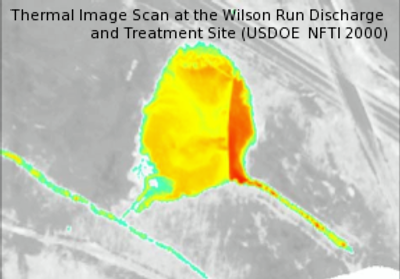Remote Sensing Technologies
Aerial remote sensing technologies, including very low frequency and conductivity
techniques, were applied in the rapid and comprehensive characterization and
assessment of three watersheds in Western Pennsylvania: the Lower Youghiogheny River,
the Sewickley Creek watershed, and the Peters Creek watershed. Information related to
pollution sources and pollution transport pathways obtained through these remote
sensing technologies will be used to focus additional land-based characterization
and validation efforts. The information generated using both aerial and land-based
methodologies will be used to develop focused restoration plans for three watersheds.
Pollution prevention opportunities, such as the application of grouting, to reduce the
impact of subsurface pollution transport pathways will also be explored.
A multi-watershed and consortium approach was used in this effort. The intent was
to apply consistent, systematic and objective approaches across a large (e.g., regional)
scale in support of collecting and analyzing assessment information and in developing
restoration plans. Additionally , it was to promote coalitions among watershed groups
in order to benefit from synergistic activities, especially in the educational and
outreach areas.

Due to the inherent speed of aerial sensing techniques, the project provided an
assessment of the Lower Youghiogheny River, the entire Sewickley Creek watershed
and the entire Peters Creek watershed. The overall objective was to develop targeted
watershed restoration plans for the two watersheds and one corridor located in
southwestern Pennsylvania. The targeting of restoration activities within these
restoration plans were accomplished by obtaining airborne remote sensing information
and using this information for decision-making purposes. The Sewickley Creek Watershed
Association, the Youghiogheny Trails Corp, the Peters Creek Watershed Association, as
well as other watershed steward groups, partnered with the Department of Energy/National
Energy Technology Laboratory and the United States Geological Survey to collect and
analyze characterization data and to enable the development of three individual, but
philosophically and scientifically consistent, watershed restorations plans. Other
partners included the Youghiogheny River Council and Penn’s Corner Conservancy

